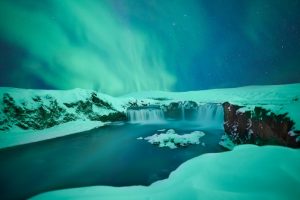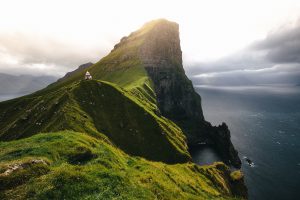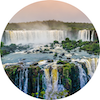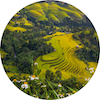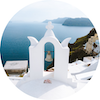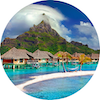Best time to visit Iceland
February 28, 2017 | by Irina | Posted in Europe
[vc_row][vc_column][vc_raw_html]JTNDZGl2JTIwc3R5bGUlM0QlMjJwb3NpdGlvbiUzQXJlbGF0aXZlJTNCaGVpZ2h0JTNBMCUzQnBhZGRpbmctYm90dG9tJTNBNzUuMCUyNSUyMiUzRSUzQ2lmcmFtZSUyMHNyYyUzRCUyMmh0dHBzJTNBJTJGJTJGd3d3LnlvdXR1YmUuY29tJTJGZW1iZWQlMkZubTRaREtUVGIzNCUzRmVjdmVyJTNEMiUyMiUyMHdpZHRoJTNEJTIyNDgwJTIyJTIwaGVpZ2h0JTNEJTIyMzYwJTIyJTIwZnJhbWVib3JkZXIlM0QlMjIwJTIyJTIwc3R5bGUlM0QlMjJwb3NpdGlvbiUzQWFic29sdXRlJTNCd2lkdGglM0ExMDAlMjUlM0JoZWlnaHQlM0ExMDAlMjUlM0JsZWZ0JTNBMCUyMiUyMGFsbG93ZnVsbHNjcmVlbiUzRSUzQyUyRmlmcmFtZSUzRSUzQyUyRmRpdiUzRQ==[/vc_raw_html][vc_column_text]
Best time to visit Iceland? Depends what you are after…
The rush to visit Iceland is on, and for good reason- the island country offers a spectacular showing of nature’s splendors mixed with a thriving food and art scene and countless once-in-a-lifetime, only-in-Iceland experiences. We are often asked what the best time to visit Iceland. The answer, like all good answers, is that it depends. Here at allé, I’m the resident Iceland travel planner, and after planning what feels like countless trips to the country, I figured it’s finally time to explain what the best time to visit Iceland is, and why it really does depend on what kind of an Iceland experience you want to have. Read on for the best time to visit Iceland and the best places to visit in Iceland based on when it is you decide to go.
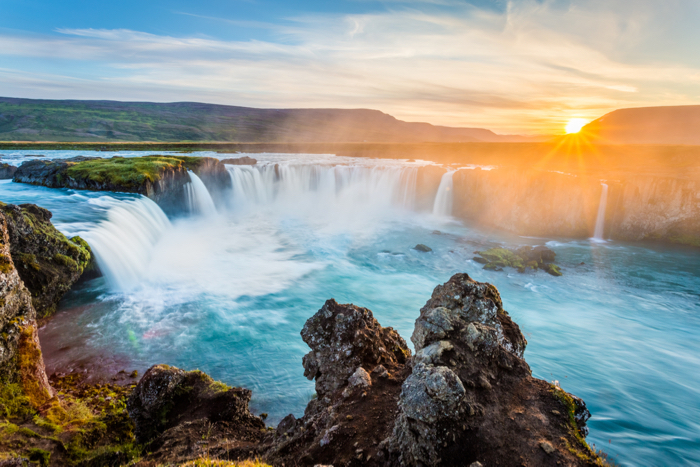
The summer months: June, July, August
Most people will tell you that summer is the best time to visit Iceland, and in many ways, I agree. The weather is at its best (though it still changes on a whim) and the outdoor activities that Iceland is so well known for are pleasant, roads that are often impassable during other times of the year (i.e. winter), are once again open for access, and the days last for nearly 24 hours, giving you even more opportunity to explore. The countryside lights up in colors of bright green, helping your photography skills really shine.
(Super) long days
The summer days in Iceland are long, really long. In fact, at their longest in the end of June, you can even witness the beauty of the midnight sun, when the sun sets after midnight. Throughout summer, you’ll see bright nights with very slow and drawn out sunsets and sunrises that make for incredibly picturesque displays of colorful skies that last for hours on end. In fact, in the north of the country in June, the sun actually never even fully sets, it just hovers on the horizon before making its way back up again.
Everyone loves summer in Iceland
Of course, there’s no such thing as a perfect time to visit, and visits to Iceland in summer certainly have their drawbacks. The main drawback to a summer visit to Iceland is that it’s peak tourist season, and you’ll find that even some of the country’s pristine and secluded natural beauties have to be shared with selfie-stick toting tourists. And though it’s certainly possible to get off the beaten path with a little planning, the supply of hotels and airbnb properties is still relatively low when compared to the recent boom in tourism the country has been seeing. Make sure to book accommodations many months in advance; a summer trip to Iceland is something very hard to book last minute. If you are visiting in the summer, also be sure to make reservations for your meals- restaurants get absolutely packed this time of year.
No Northern Lights or Ice Caves
Summer also isn’t a good time to visit if you’re interested in seeing the Northern Lights (though it’s not completely impossible, it’s just very unlikely since there’s so few hours of darkness). It’s also not possible at all to visit Ice Caves in the summer months.
Best places to visit in Iceland in the summer
- Drive inland: summer is the best time of year to traverse F-roads (4WD cars required) and explore the highlands of Iceland. Make sure to stop at Aldeyharfoss and Langjökull icecaps.
- West Fjords: without a doubt, the most untouched corner of the country. Dynjandi and Arnarfjördur waterfalls are well worth the visit, as is swimming in Patreksfjördur pool (complete with a view of a fjord).
- Dettifoss to Asburgy overnight hike: possibly one of the best 2 day hikes in Iceland with incredible landscapes along the way.
- Go inside a volcano: Iceland is the only place on earth where you can go deep within a dormant volcano’s magma chamber.
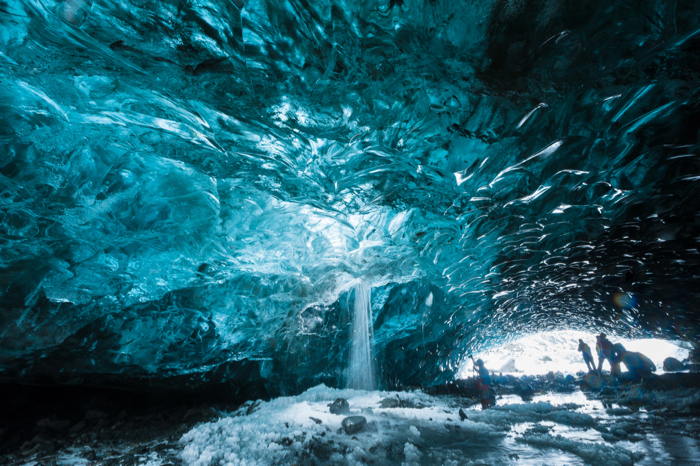
The winter months: December, January, February
Even though Iceland is located very far north, its winters aren’t as bitter cold as one would think, making visits in winter entirely a good idea. Winter is definitely the best time to visit Iceland if you are interested in seeing the Northern Lights, a spectacular natural phenomenon that lights up the crisp northern sky with bright colors, and if you’re not afraid of spending a few, or many, hours in the dark.
(Super) short days
Sure, most of us understand that winter comes with shorter days, but this is taken to another level in Iceland. In the depth of winter, which peaks in late December, the days are at the very most 4 hours long. That’s important to take into consideration if you plan on doing any hiking (most hikes are at least 2 hours, and you still have to drive there and back), or if you have intentions of covering a lot of ground and driving far.
It’s not that cold
Though the name of the country or a glance at any world map may suggest that winters in Iceland are brutally cold, that’s actually not the case. This is due in part to the Gulf Stream that flows along the west and south of Iceland, bringing with it warmth all the way from the Caribbean. The country is also located on one of the earth’s hot spots, with a wealth of geothermal activity (hot springs, geysers, mud pools, volcanoes) to keep things sufficiently warm. Temperature-wise, this translates to averages of about 0°C (32 °F) in the winter months. Do note though, that even though it’s not that cold, the weather is especially unpredictable in the winter, so multiple layers are essential.
Bad and impassable roads
Major roads in Reykjavik and the Ring Road that circles the country are generally kept in very good shape, but the inland roads (any road numbers that are preceded by the letter F) that pass through the mind-blowingly picturesque highlands of Iceland are absolutely off limits. Generally speaking, if you’re driving outside of Reykjavik, any venturing off the Ring Road isn’t a very good idea (or it’s flat out banned) in winter.
Winter is for Northern Lights and Ice Caves
Without a doubt, the highlights of any winter visit to Iceland are the Northern Lights and Ice Caves. Though no one can guarantee a Northern Light sighting, visiting in the winter is setting yourself up for success- long nights and crisp winter air that make for good visibility, which is essential to actually being able to see the Northern Lights and if that is what you are after then this is the best time to visit Iceland. Ice caves on the other hand are a guaranteed sight during Icelandic winters, and one you should absolutely not miss out on; just be sure to book in advance with a guide, this isn’t something you can DIY (I recommend Extreme Iceland)
Best places to visit in Iceland in the winter
- Blue Lagoon or Secret Lagoon for a Northern Lights hot spring soak
- Jökulsárlón glacier lagoon is really spectacular in the winter, and one of the best places in the country to watch the Northern Lights
- Ice Caves: I especially love the Vatnajökull Glacier Ice Caves and Langjökull Glacier Ice Caves.
- Reykjavik restaurants and art galleries: there are too many amazing ones to choose from, but I do highly recommend Mikkeller & Friends, Matur og Drykkur, Þrír Frakkar and Fish Market.
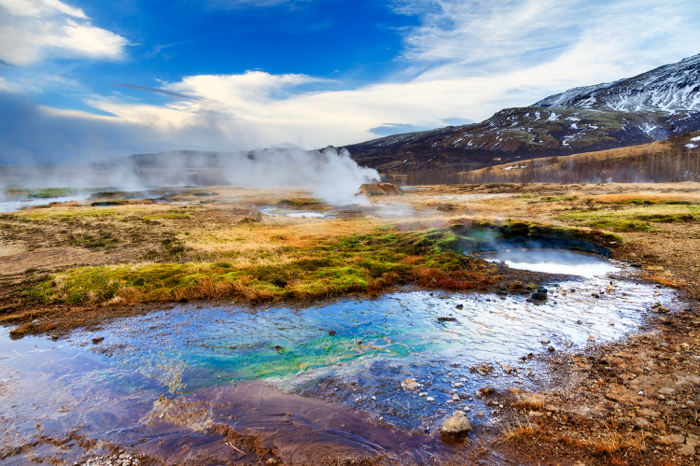
The fall and spring months: September, October, November, March, April, May
The fall and spring months are the best time to visit Iceland if you want a taste of both worlds; if you’re not dead-set on seeing the Northern Lights or having excellent weather for long hikes, and if you’re ok with having about “normal” daylight hours- not too long of days, but not too short of days either.
Not many fellow travelers
In between the peak summer months and the winter months that have some visitors flocking to see the Northern Lights, the spring and fall months usually see a bit of a lull in visitors. May and September are particularly wonderful times to plan a visit, with most of the benefits of summer travel being available to you without the drawback of crowds.
Mixed bag of weather
I can’t stress it enough: the weather in Iceland is unpredictable and changes often. Icelanders joke that, “If you don’t like the weather, just wait a few minutes”. This couldn’t be more true for spring and fall, making planning as far as wardrobe and itinerary is concerned quite the project as well as pick the best time to visit Iceland. Travelers to Iceland this time of year should always have a plan B in mind, especially if you want to go inland to the highlands or for any long hikes. The fall is also a great time to go if you are mildly interested in seeing the Northern Lights.
Lake Myvatn in all its glory
One of my favorite places to visit during the spring and fall months is Lake Myvatn, an area that’s hard to get to in the winter and sometimes suffers from the attack of the black flies in the summer months (seriously!). Lake Myvatn is absolutely perfect in the spring and fall. You can easily spend two or three days here biking around the lake and exploring the gems of the area: a geothermal spa that is the lesser known cousin of the Blue Lagoon, Dimmuborgir lava towers, Hverfell crater and Namafjall sulphur deposits.
Best places to visit in Iceland in the fall and spring
- Drive all the way around the Ring Road, and make sure to make an extra long stop at the often overlooked Stórurð in the east of the country, as well as the Snaefellness peninsula.
- Lake Myvatn and its surrounding areas; give yourself at least one full day here to explore the range of natural wonders to be found.
- Skaftafell national park is painted in seasonal colors, coming alive in bright green in the spring, and the colors changing in the fall. A range of activities here include hiking, glacier climbing, glacier walking and mountain climbing.
- Snorkel between the continents: truly a once in a lifetime opportunity to not only be at the spot where two continental plates meet, but to also snorkel though the waters between the two.
[/vc_column_text][/vc_column][/vc_row][vc_row][vc_column][vc_column_text]
[/vc_column_text][/vc_column][/vc_row][vc_row attached=”true”][vc_column][mk_custom_box corner_radius=”5″ overlay_color=”#555c72″ bg_stretch=”true”][vc_row_inner attached=”true” is_fullwidth_content=”false” column_padding=”1″][vc_column_inner css=”.vc_custom_1490447988168{padding-top: 25px !important;padding-left: 25px !important;}”][vc_column_text]Subscribe to our newsletter
For the latest and greatest in off the beaten path travel stories and travel tips.
Join our mailing list to start receiving exclusive content only our newsletter members have access to.
[/vc_column_text][vc_raw_html]JTNDJTIxLS0lMjBCZWdpbiUyME1haWxDaGltcCUyMFNpZ251cCUyMEZvcm0lMjAtLSUzRSUwQSUzQ2xpbmslMjBocmVmJTNEJTIyJTJGJTJGY2RuLWltYWdlcy5tYWlsY2hpbXAuY29tJTJGZW1iZWRjb2RlJTJGaG9yaXpvbnRhbC1zbGltLTEwXzcuY3NzJTIyJTIwcmVsJTNEJTIyc3R5bGVzaGVldCUyMiUyMHR5cGUlM0QlMjJ0ZXh0JTJGY3NzJTIyJTNFJTBBJTNDc3R5bGUlMjB0eXBlJTNEJTIydGV4dCUyRmNzcyUyMiUzRSUwQSUwOSUyM21jX2VtYmVkX3NpZ251cCU3QiUyMGZvbnQlM0ExNHB4JTIwSGVsdmV0aWNhJTJDQXJpYWwlMkNzYW5zLXNlcmlmJTNCJTIwd2lkdGglM0ExMDAlMjUlN0QlMEElMjAlMjAlMjAlMjAlMjAlMjAlMjAlMjAlMjNtY19lbWJlZF9zaWdudXAlMjBpbnB1dC5idXR0b24lN0IlMjBiYWNrZ3JvdW5kJTNBJTIwJTIzM2Y4YTNhJTIxaW1wb3J0YW50JTNCJTdEJTBBJTNDJTJGc3R5bGUlM0UlMEElM0NkaXYlMjBpZCUzRCUyMm1jX2VtYmVkX3NpZ251cCUyMiUzRSUwQSUzQ2Zvcm0lMjBhY3Rpb24lM0QlMjIlMkYlMkZhbGxldHJhdmVsLnVzMTAubGlzdC1tYW5hZ2UuY29tJTJGc3Vic2NyaWJlJTJGcG9zdCUzRnUlM0RlOTRlNjZlZmM5YjFkMGQ3YTdkNWJlYjVmJTI2YW1wJTNCaWQlM0QwODRjOGNmYWVjJTIyJTIwbWV0aG9kJTNEJTIycG9zdCUyMiUyMGlkJTNEJTIybWMtZW1iZWRkZWQtc3Vic2NyaWJlLWZvcm0lMjIlMjBuYW1lJTNEJTIybWMtZW1iZWRkZWQtc3Vic2NyaWJlLWZvcm0lMjIlMjBjbGFzcyUzRCUyMnZhbGlkYXRlJTIyJTIwdGFyZ2V0JTNEJTIyX2JsYW5rJTIyJTIwbm92YWxpZGF0ZSUzRSUwQSUyMCUyMCUyMCUyMCUzQ2RpdiUyMGlkJTNEJTIybWNfZW1iZWRfc2lnbnVwX3Njcm9sbCUyMiUzRSUwQSUwOSUwQSUwOSUzQ2lucHV0JTIwdHlwZSUzRCUyMmVtYWlsJTIyJTIwdmFsdWUlM0QlMjIlMjIlMjBuYW1lJTNEJTIyRU1BSUwlMjIlMjBjbGFzcyUzRCUyMmVtYWlsJTIyJTIwaWQlM0QlMjJtY2UtRU1BSUwlMjIlMjBwbGFjZWhvbGRlciUzRCUyMllvdXIlMjBiZXN0JTIwZW1haWwlMjIlMjByZXF1aXJlZCUzRSUwQSUyMCUyMCUyMCUyMCUzQyUyMS0tJTIwcmVhbCUyMHBlb3BsZSUyMHNob3VsZCUyMG5vdCUyMGZpbGwlMjB0aGlzJTIwaW4lMjBhbmQlMjBleHBlY3QlMjBnb29kJTIwdGhpbmdzJTIwLSUyMGRvJTIwbm90JTIwcmVtb3ZlJTIwdGhpcyUyMG9yJTIwcmlzayUyMGZvcm0lMjBib3QlMjBzaWdudXBzLS0lM0UlMEElMjAlMjAlMjAlMjAlM0NkaXYlMjBzdHlsZSUzRCUyMnBvc2l0aW9uJTNBJTIwYWJzb2x1dGUlM0IlMjBsZWZ0JTNBJTIwLTUwMDBweCUzQiUyMiUyMGFyaWEtaGlkZGVuJTNEJTIydHJ1ZSUyMiUzRSUzQ2lucHV0JTIwdHlwZSUzRCUyMnRleHQlMjIlMjBuYW1lJTNEJTIyYl9lOTRlNjZlZmM5YjFkMGQ3YTdkNWJlYjVmXzA4NGM4Y2ZhZWMlMjIlMjB0YWJpbmRleCUzRCUyMi0xJTIyJTIwdmFsdWUlM0QlMjIlMjIlM0UlM0MlMkZkaXYlM0UlMEElMjAlMjAlMjAlMjAlM0NkaXYlMjBjbGFzcyUzRCUyMmNsZWFyJTIyJTNFJTNDaW5wdXQlMjB0eXBlJTNEJTIyc3VibWl0JTIyJTIwdmFsdWUlM0QlMjJTdWJzY3JpYmUlMjB0byUyMG5ld3NsZXR0ZXIlMjIlMjBuYW1lJTNEJTIyc3Vic2NyaWJlJTIyJTIwaWQlM0QlMjJtYy1lbWJlZGRlZC1zdWJzY3JpYmUlMjIlMjBjbGFzcyUzRCUyMmJ1dHRvbiUyMiUzRSUzQyUyRmRpdiUzRSUwQSUyMCUyMCUyMCUyMCUzQyUyRmRpdiUzRSUwQSUzQyUyRmZvcm0lM0UlMEElM0MlMkZkaXYlM0UlMEElMEElM0MlMjEtLUVuZCUyMG1jX2VtYmVkX3NpZ251cC0tJTNF[/vc_raw_html][/vc_column_inner][/vc_row_inner][/mk_custom_box][/vc_column][/vc_row]

